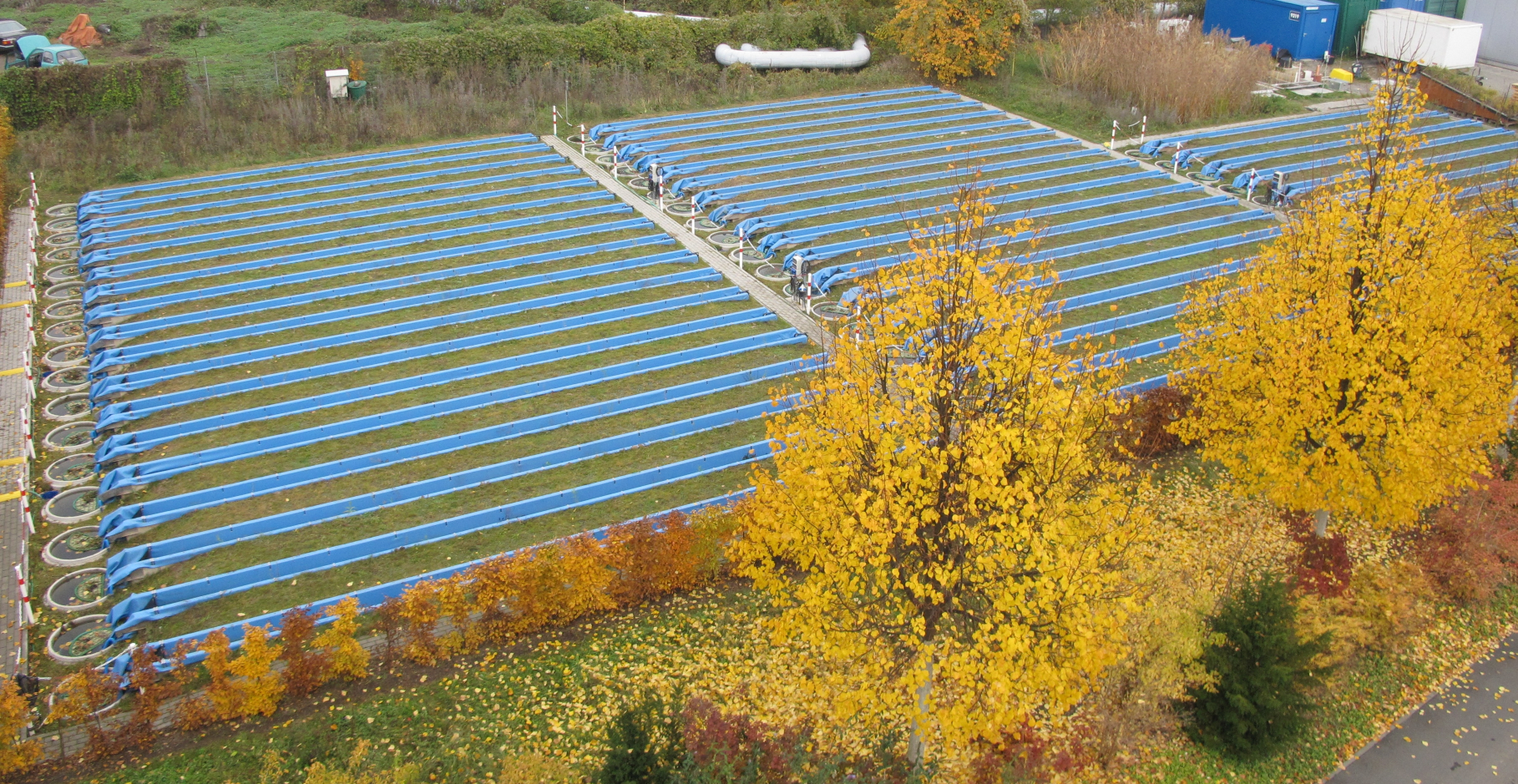
Effect mechanisms
Toxicant disturb ecological processes. We identify relevant mechanisms and develop models for the risk assessment in aquatic ecosystems.
From test tubes to communities
Toxicants affect natural communities often at much lower concentrations compared to laboratory tests [1]. We investigate the effect propagation from individual organisms to populations and communities in the field. For this, we combine the results from various test systems with increasing complexity. These extend from standard tests at individual level and nanocosms with 1-2 competing species [2] to complex communities in microcosms [3] and stream-mesocosm studies [4].
Stream experiment Leipzig
Since 2014 we have been running a unique test facility based on 47 large-scale artificial streams, which harbor also rare and sensitive species. Here we quantify effects of plant protection products on nearly natural ecosystems and test our mechanistic models for risk assessment.
Toxicants affect natural communities often at much lower concentrations compared to laboratory tests [1]. We investigate the effect propagation from individual organisms to populations and communities in the field. For this, we combine the results from various test systems with increasing complexity. These extend from standard tests at individual level and nanocosms with 1-2 competing species [2] to complex communities in microcosms [3] and stream-mesocosm studies [4].
Stream experiment Leipzig
Since 2014 we have been running a unique test facility based on 47 large-scale artificial streams, which harbor also rare and sensitive species. Here we quantify effects of plant protection products on nearly natural ecosystems and test our mechanistic models for risk assessment.
Selected publications
- Beketov MA, Kefford BJ, Schäfer RB, Liess M 2013. Pesticides reduce regional biodiversity of stream invertebrates. Proceedings of the National Academy of Sciences of the United States of America, 110 (27), 11039 - 11043.
- Liess M, Foit K, Becker A, Hassold E, Dolciotti I, Kattwinkel M, Duquesne S 2013. Culmination of low-dose pesticide effects. Environmental Science & Technology, 47 (15), 8862 - 8868.
- Knillmann S, Stampfli NC, Noskov YA, Beketov MA, Liess M 2013. Elevated temperature prolongs long-term effects of a pesticide on Daphnia spp. due to altered competition in zooplankton communities. Global Change Biology 19 (5), 1598 - 1609.
- Liess M, Beketov M 2011. Traits and stress - keys to identify community effects of low levels of toxicants in test systems. Ecotoxicology 20 (6), 1328 - 1340.
